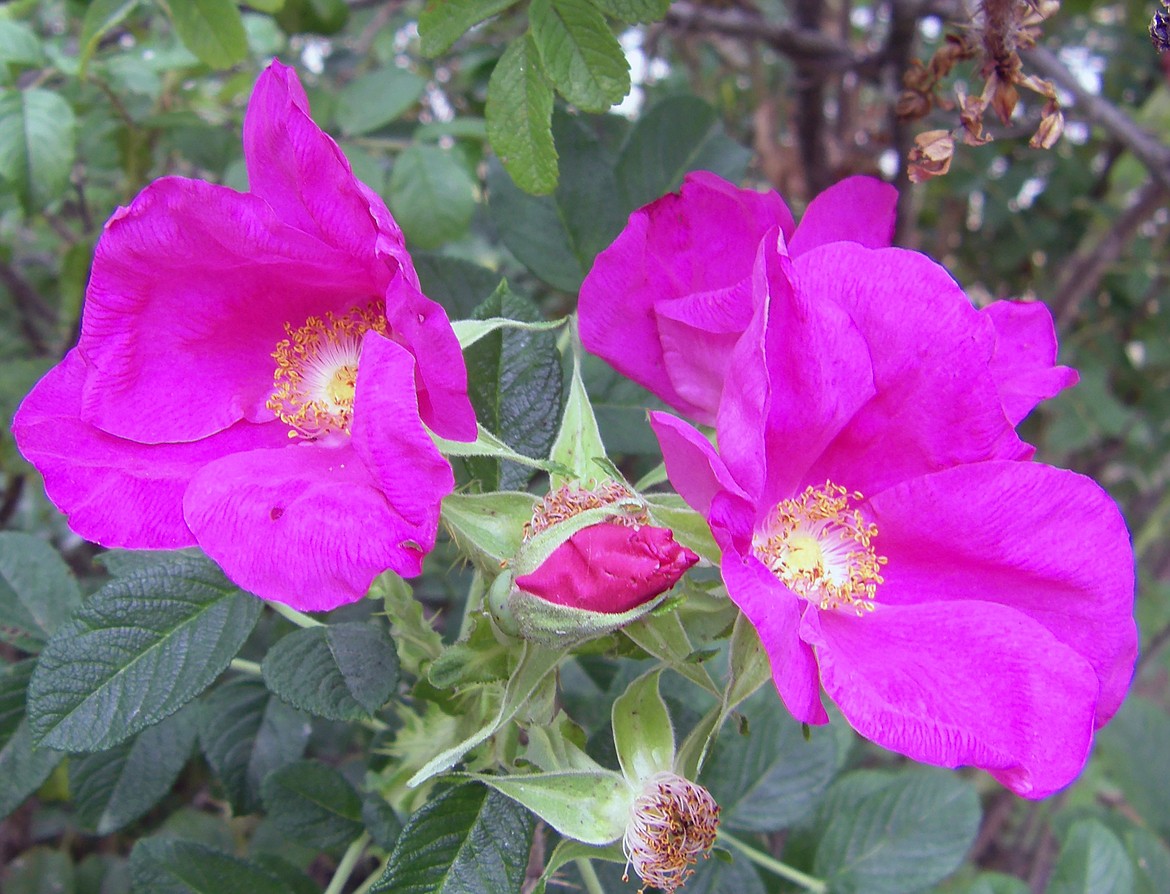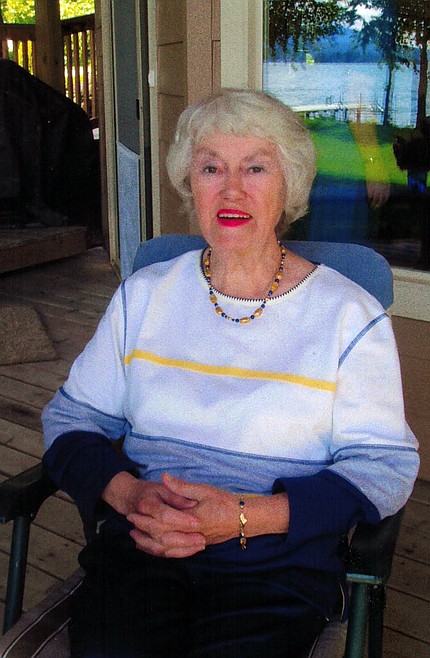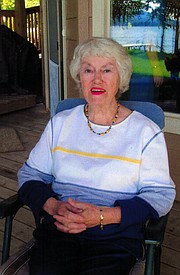Reprise of rose care may save grief as well as unneeded effort
After a recent phone call from a very savvy garden friend, asking if she should prune back her roses, (and telling her NO.), I guess it’s time for an update for our many new residents unused to our weird North Idaho winters.
Rose “experts” — usually from back East, tout pruning our roses back heavily in the late fall. Wrong. That’s for humid climates. Yes, you may cut out dead wood and tip-prune bent or damaged branches, but in North Idaho, roses need a strong body/branch base to nurture the roots and dormant buds. An overcoat of burlap over tender hybrids during winter is not remiss, either. In spring, wait until bud-break discloses living wood and do your pruning accordingly and safely.
Another fallacy is fall fertilizing: again, wrong. Roses must go dormant and fertilizer gives them an immediate boost which they certainly don’t need when they want to go to sleep. Give it to them through the summer, and every six weeks or so until mid-September — that’s NOW — and then quit until next Spring.
Here are some tips — and not just for roses, but beginning with them. They include all-year care, as well as advice on other perennials, so you may want to clip this for next year.
• Heavy rains (and overhead sprinklers) can cause blackspot. If your roses are marred with it, pick off all affected foliage and get rid of it. Do NOT put it in the compost pile. Caveat: Always water roses from the base.
• Tidy climbing roses as their blooming slows. Take out old wood (grey rather than brown or green), as well as damaged and/or diseased wood. Re-tie canes to support for wind/storm protection.
• While tidying rose bushes, snip out crossing canes that have finished blooming, and get rid of yellow or diseased-looking leaves. Too, be sure to clean up any that have fallen on the ground under the plants.
• The one time you can use “overhead” watering on roses is when they have aphids. Use a sharp spray from the hand-held hose nozzle to wash the little pests away. If this doesn’t prove effective, use a soap spray.
• If you deadhead your roses (removing old blooms) consider the type of rose and whether or not it creates large hips. You may want to keep them for winter color, bird food, and a healthy tea. In this case, simply rub away the dead petals with your fingers (into a bag for the compost pile.)
• Don’t forget that your (unsprayed) rose-petals are a fragrant and lovely edible topping for cakes and in punchbowls and are wonderful in a pretty keepsake bowl for potpourri..
• Many well-meaning gardeners want to immediately “clean up” their leafy perennials when they’re finished blooming; Iris among these. Yes, cut the stem that bore the blossom, but NOT the leaves. You will deprive the root systems of nutrients that will continue to nurture the root, bulb, tuber or corm.
• Some Iris growers “fan” their plants after bloom, cutting just the leaf tops into an upward “vee.” Do what you wish, but no severe trimming, please. I personally simply wait until spring’s snows have melted, then pull away the dead yellowed and brown leaves of Iris, Peony, Valerian and such.
• Spring’s heavy rains can leach out nutrients in the soil. That’s the time to fertilize. I recently added blood meal to the perennial path beds and gave my potted plantings a dose of fish emulsion. Since my roses are all hardy Rugosa species, they need nothing special but thrive in our acidic soil as do all native plants. Reminder: Don’t fertilize natives.
I have been remiss in floral advice this year — been too wrapped up with the birds, I guess. But 20-some years ago, I was deeply involved with rose care and culture, giving seminars at various nurseries, and designing the then-new Healing Garden rose beds, selecting a variety of old, new, shrub and bush roses — many of which have thrived. When former Bonner General Health CEO Gene Tomt was readying for retirement, he did me the honor of asking me to oversee the establishment of his dream of a Healing Garden where hospital patients and their visitors could sit and enjoy the peace and beauty of flowers.
After a year of bull-dozing, tree thinning, and other preparation with super talented co-gardener Barb Pressler and a dedicated crew, the rose garden was ready to plant. I had coaxed and pressured Linda Plaster, who was working at the hospital gift shop, to join the crew — and she finally did. The rest is history. After completion, I was happy to entrust the reins to Linda — who continued to enlarge and work the gardens — adding her own sweet touches like pansy beds — tirelessly until she passed away, leaving a loving legacy for all the visitors to the garden today.
The Old Farmer’s Almanac is calling for snow in our area mid-October. Right or wrong, I’m going to err on the safe side and be ready for it. Good luck.
Valle Novak writes the Country Chef and Weekend Gardener columns for the Daily Bee. She can be reached at bcdailybee@bonnercountydailybee.com. or by phone at 208-265-4688 between the hours of 8 a.m. to 7 p.m.



